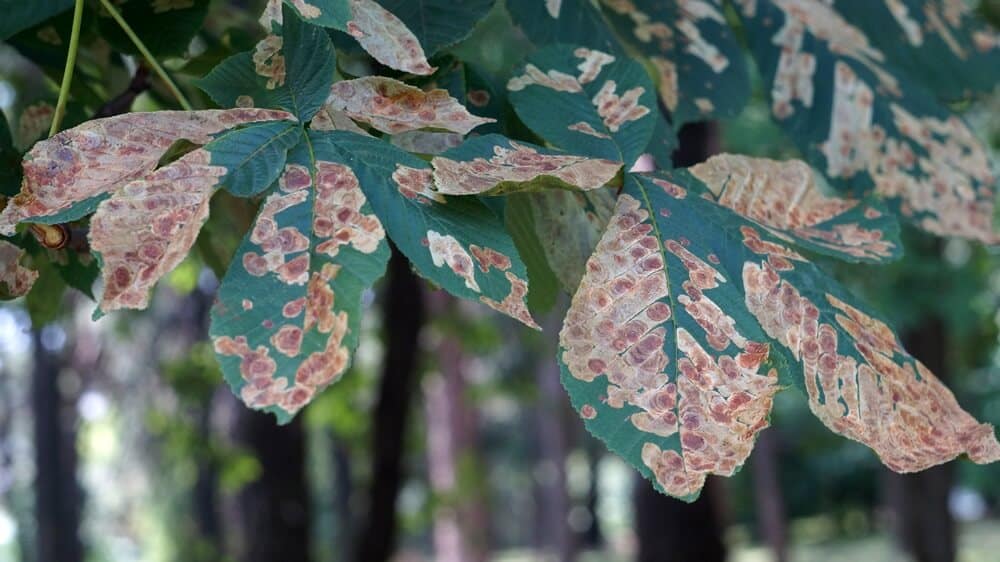Blog
5 common tree diseases and how to spot them

Trees, like all living organisms, can contract diseases. Certain types merely detract from a tree’s overall appearance while others can have more serious consequences. Here’s an overview of five common trees diseases and how to spot them.
- Leaf rust
Leaf rust is a fungal disease that affects various hardwood species, including poplar, willow, oak, maple, ash and birch trees. It’s characterized by yellow, orange or reddish spotting on the leaves. This disease mars the appearance of trees and causes early defoliation.
- Tar spot
Tar spot is a fungal disease that primarily affects the leaves of maples, sycamore and holly. The first signs of tar spot occur in late spring or early summer, when light green or yellow-green spots appear on the leaves. In mid- to late summer, these spots become black. Tar spot doesn’t generally affect the health of a tree but it is unsightly. Tar spot also affects willows in the Calgary area.
- Cankers
A canker is a section of dead bark resulting from tissue infection. Generally, the infection is the result of an open wound that has been colonized by fungi or bacteria. In appearance, cankers are discolored brown or reddish lesions on the bark, often oval in shape. In addition, the bark tends to split where the diseased tissue meets the healthy tissue.
Cankers affect a wide range of tree species. They frequently cause branches to die and can affect a tree’s structural integrity.
- Wilt disease
A wilt is a serious disease that can lead to the death of a tree or plant. Types of wilts include oak wilt, mimosa wilt, Dutch elm disease and verticillium wilt, which affects over 350 species of trees and plants. A wilt is characterized by scorched-looking leaves on the crown that remain attached to the tree. It is typically caused by fungi that clog trees vessels, preventing water from reaching the crown.
- Armillaria root rot
This type of root rot can affect nearly any species of deciduous or coniferous tree. Trees infected with Armillaria rot experience poor growth and can eventually die. Symptoms of the disease include yellow to brown foliage and dead branches in the upper canopy. In addition, there may be clusters of honey-coloured Armillaria mushrooms growing around the base of the tree.
Tree care services in Edmonton, Calgary and Kelowna
If you suspect your tree is diseased, turn to a qualified arborist for tree care services. From pruning and tree removal to treatment of tree diseases such as Dutch elm disease, the team at ArborCare offers professional, high-quality tree care service. Contact us today to schedule an appointment in or near Calgary, Edmonton or Kelowna.
 1-877-444-8733
1-877-444-8733